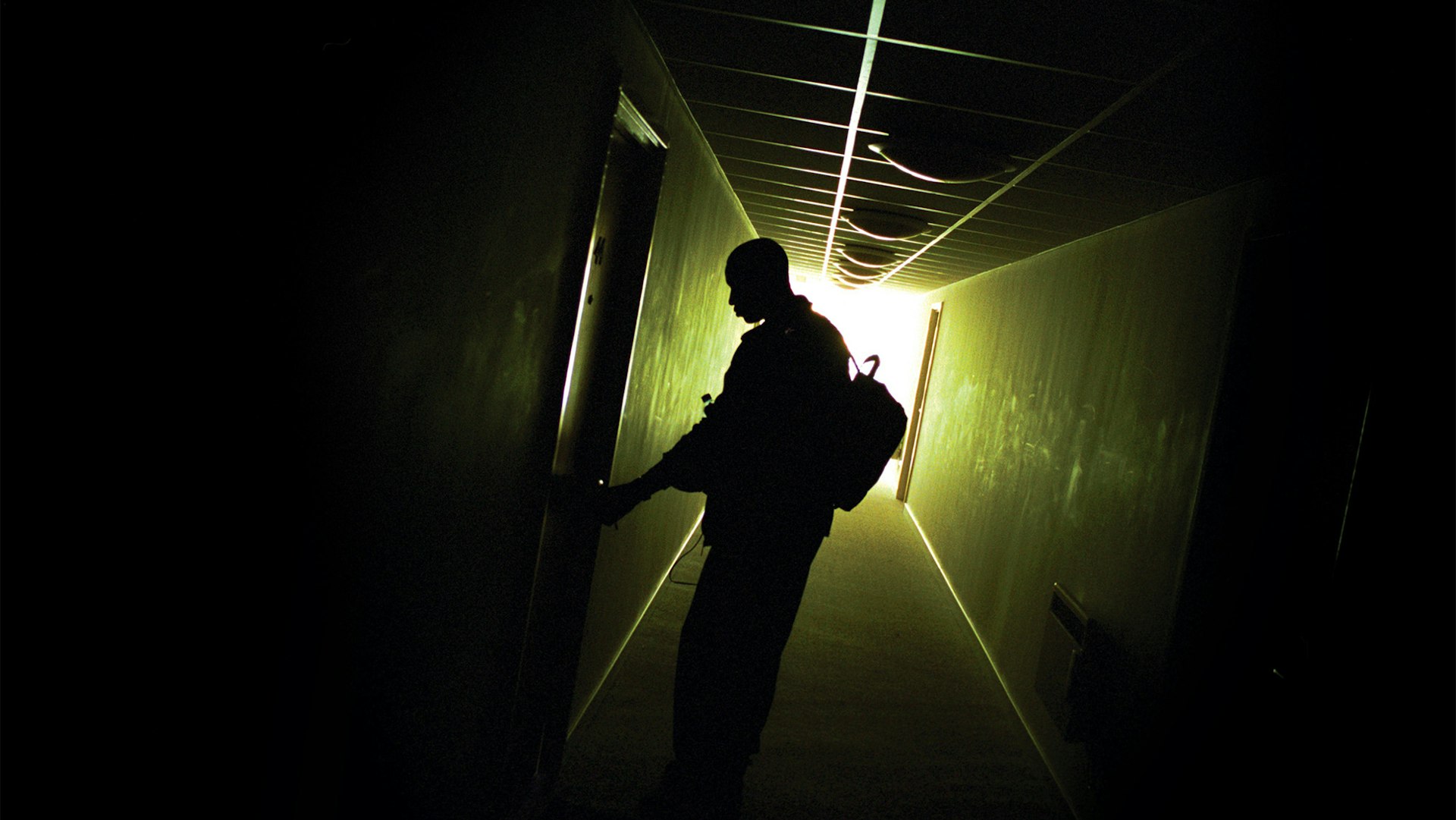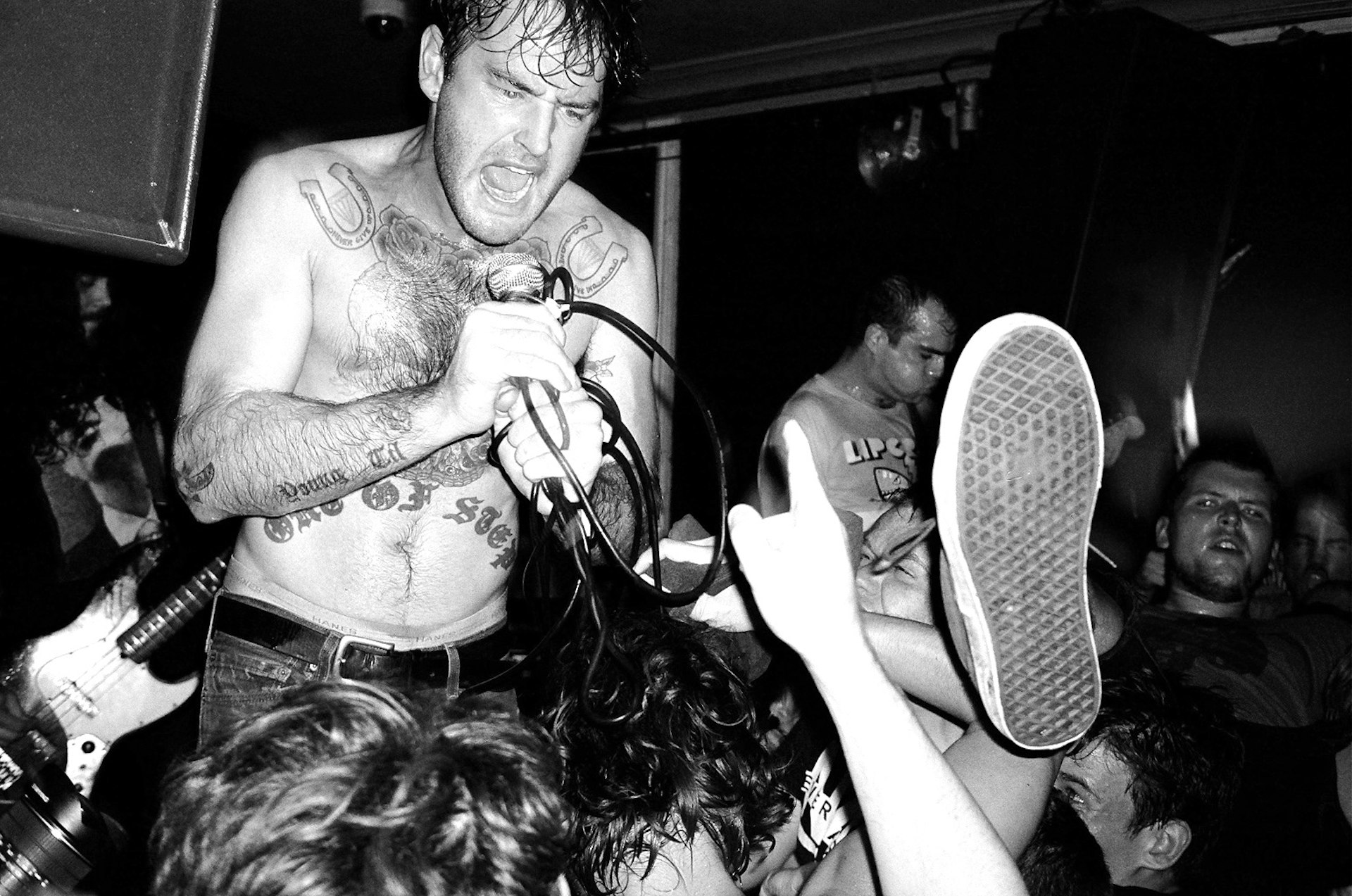
Chris Hoare - Dreamers
- Text by Alex King
- Photography by Chris Hoare
Dreamers is a documentary photography project that grew out of a love for Bristol’s vibrant hip hop scene. Through an involved study of a genre that has burned bright in the city for generations, Chris Hoare has captured many of the changes occurring not only within hip hop, but in music more generally. The increased accessibility of music, production tools and distribution strategies has created a saturated marketplace where all new artists must compete aggressively for attention. Video has become increasingly important as acts battle it out for recognition from an ever more fickle audience. Chris records many of these changes as they manifest themselves on the streets of Bristol and illuminates the many personalities who are continuing to build on the city’s rich and varied musical heritage.
What’s your own personal connection to Bristol’s hip hop scene, and why did you want to devote three years of your life to documenting the scene?
“My connection with the scene starts with being a fan of the music. The more I documented it, the more it resonated with me. I listen to music from the city daily and try my best to keep up with the latest tracks and artists. I began documenting the scene because I was interested in the way the music sounded, what the artists were saying and how the music appeared visually. A distinctive visual style was evident in the videos that I was seeing around the time I started the project.”
Could you talk a little about the history of hip hop in Bristol and how it has become arguably the next most important hip hop city in the UK after London?
“It has to be said I’m certainly no expert, however, I’m more then aware of the cities rich musical roots. Hip-hop has played an important role for the best part of 35 years. You only have to look at Andrew Beezer’s photobook The Wild Dayz, a fascinating photographic record of the Bristol hip hop culture in the 1980s. Some of the older ‘heads’ in the scene have told me that it was just as prominent back then as it was now, if not more so. This history has created a great platform for the current generation of hip-hop artists, who are continuing to diversify and add to the city’s already significant reputation.”
What makes the Bristol hip hop scene distinctive from the scenes in other cities in the UK?
“I would probably say that it is the city itself, which has a massive impact on what the artists are saying and how they are living. That’s ultimately what hip-hop is about: expressing yourself from your own experience. Bristol is massively diverse, freethinking and open minded. The environment definitely has a part to play in nurturing the success of the city’s artists.”
Can you explore and go into a bit more depth about what you mean when you say ‘Music is an important and divisive part of the fabric of Bristol.’
“This comment points a finger at Bristol’s prominence as a haven for musical subcultures: music is in the DNA of the city. From the punk scene in the 80s, all the way to the pioneering role played in the emergence of drum ‘n bass in the 90s. Not to mention the impact of bands such as Massive Attack have in establishing what is now known as trip-hop. This reveals the divisive nature of music in the city as so many musical cultures have left their mark, remarkable for such a small city.”
You mention how technological developments are changing the nature of hip hop: from the ability to self-produce and self-release to the role of social media in promoting music and connecting with audiences. How can you see those forces changing the hip hop scene?
“The most significant change is the increased accessibility of not just hip-hop, but music in general, over the last few years. That said, I’m part of a a generation that doesn’t really know any different. What’s interesting with hip-hop today, and one of the attractions of documenting it, is the huge importance of video. It plays such an important role as fans are glued to YouTube waiting for the latest video and it gets people talking.”
You talk about ‘Today’s generation of Hip-Hoppers have noticeable parallels to their predecessors in New York in the 70s and 80s.’ Beyond using new technology, what are the other parallels to that era, and what are the new things this generation are saying that haven’t been said before?
“It’s difficult for me to compare now and then without having experienced what what people were going through back then for myself. But I do understand what people of my age and younger are facing today, in the here and now. Most would agree that there is a huge mistrust of the current political system and its leaders, who come from a completely different world to the one where their actions resonate. This feeling, together with the multitude of problems that kids face today, provides ammunition for hip hoppers of our generation.”
You mention the struggle to get noticed and hint at heavy competition between artists. I’ve talked to a lot of Bristol based artists, designers, etc. and they all say in Bristol people are always up for helping each other out, collaborating, bringing people along and encouraging new talent. To what extent is that true in the Bristol hip hop scene, or is it a lot more competitive?
“Bristol on the whole is a very good place to collaborate; I’ve experienced this with photography and continue to work as much as I can with other creatives. The hip hop scene in general works in the same way. Artists are featuring on each others’ tracks and collaborating all the time, which is evident in many of the videos. I think the whole competitiveness is part and parcel of the scene. Whether they are open about it or not, everyone wants to shine above the rest.”
To check out more of Chris’s work hit his website, or get yourself a copy of Dreamers here.
